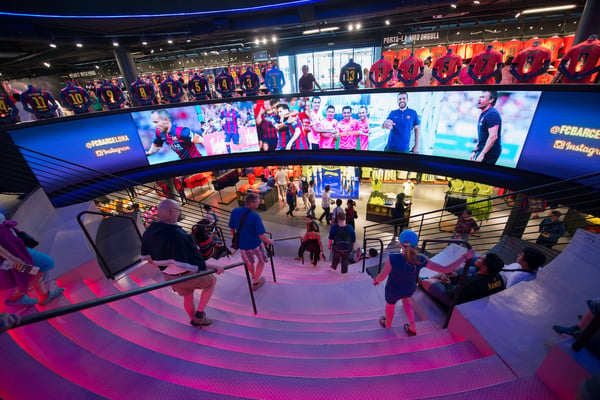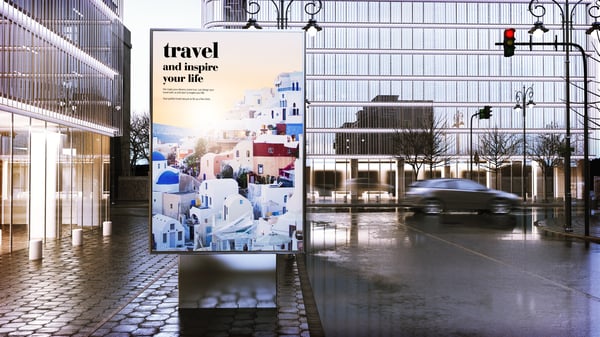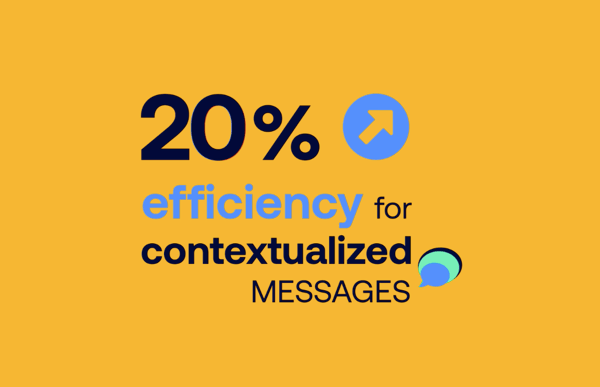E-commerce has given traditional retailers the opportunity to rethink their business models and innovate around a particular added value: the customer experience. The shop is thus transformed by leveraging all the possibilities offered by digitisation.
Far from overwhelming them, e-commerce has given traditional retailers the opportunity to take stock of their situation, rethink their model and innovate around their added value: the customer experience.
From now on, consumers don’t simply go to the shop to buy an item that could be purchased in a few clicks on their smartphone, but also to enjoy, consciously or otherwise, what online can’t provide: real sensations. The store as we know it is changing rapidly and creating its own revolution by using all the possibilities offered by digital technology. At the heart of this new model, digital signage appears to be the key to opening a new world where data will be the main driver over the years to come.
When the point-of-sale experience is transformed
In recent years, the retail sector has been given a shock. It was caught in a dilemma, and shaken bye-commerce with a formidable range of weapons at it’s disposal: fast access to products everywhere, and at any time: ultra-competitive prices, with the luxury of receiving continual qualified information on the consumer (via cookies)… But, far from admitting defeat, the bricks and mortar retailers have been able to react and focus on their own assets, the human factor and customer services, offering the consumer new experiences.
Innovations have flourished in-store, with an array of proposals and offers to attract and maintain contact with customers. And, because retailers have developed their own e-commerce applications, they have also sought to unify the experience between the on and off-line points-of-sale, in order to reduce the opposition between these two worlds.
Digital signage on the front line
Digital signage stars in this context as the main key to creating this complementarity relationship between digital and physical commerce. Like no other media before it, this technology is able to capture the consumer's attention at the point-of-sale without crossing the line of confidentiality. Using a broadcasting space that has a much greater impact than a smartphone screen, draws the customer fully into the brand's universe.

Unlike traditional paper point-of-sale (POS) advertising (gondola display, spotter, etc.), digital signage multiplies the sales force because it captures attention. And, in contrast with a touch terminal, where you have to go and get the information (pull), digital signage directs the message towards the customer (push).
A more dynamic point of sale
However, not all displays are equal. Looping a video on a screen to create an in-store experience is just not enough. This is the most basic level of digital signage:
Repetitive, non-contextualised and rapidly obsolete messages that do not provide any measure of their impact on the audience.
More recently, solutions have emerged that provide the opportunity to truly scale-up digital signage. Where previously 40 paper posters were replaced by one screen, now 40 screens can be installed and managed all together at different points of sale, to offer the same brand experience, anywhere in the world. Remote control is used, so broadcasting can be programmed and therefore anticipated.
These new solutions, thanks to intelligent algorithms, make it possible to analyse the population and thus differentiate messages. It is therefore possible to broadcast separate messages on Wednesdays or Saturdays depending on the traffic. However, there are some limitations to this system. For example, if you run promotions on ice cream because it's summer, but the weather is rainy or unseasonably cold, you won't have the required impact on your customers and the brand experience will be compromised.

Towards the advent of smart digital signage
When you know that a message gains 20 points in its recall rate when broadcast in context, you can understand why a new generation of digital signage platforms are emerging on the market. Fully data driven, these solutions allow you to search for available data sources inside or outside the point of sale. By recovering the data generated by sensors (stock levels, video counting, smart thermometer, etc.), these Content Management Systems play the intelligence card to provide the holy grail of marketing: the ever-so elusive ‘right message, in the right place, at the right time'.

By configuring their intelligent digital signage system, retailers can reach their customers with contextualised messages in real time. For example, the platform can be programmed to ensure that as soon as the outside temperature exceeds a certain number of degrees, the ice cream promotion is automatically launched. Ultimately, we can even see that this smart display will make its own broadcast decisions based on the data collected and processed. The message will thus always be relevant with what the consumer is experiencing, and what the brand is able to deliver at any given moment. Ice cream? Yes, but only if they are still in stock!
For this, the development of the IoT (Internet of Things) at the point-of-sale is essential. The richer the data collected, the more relevant digital signage will become, finally having a measurable and meaningful impact on the point-of-sale’s performance. Transforming your screens into a centre for revenue and a ROI (Return on Investment) is now at last, in the realms of possibility!
